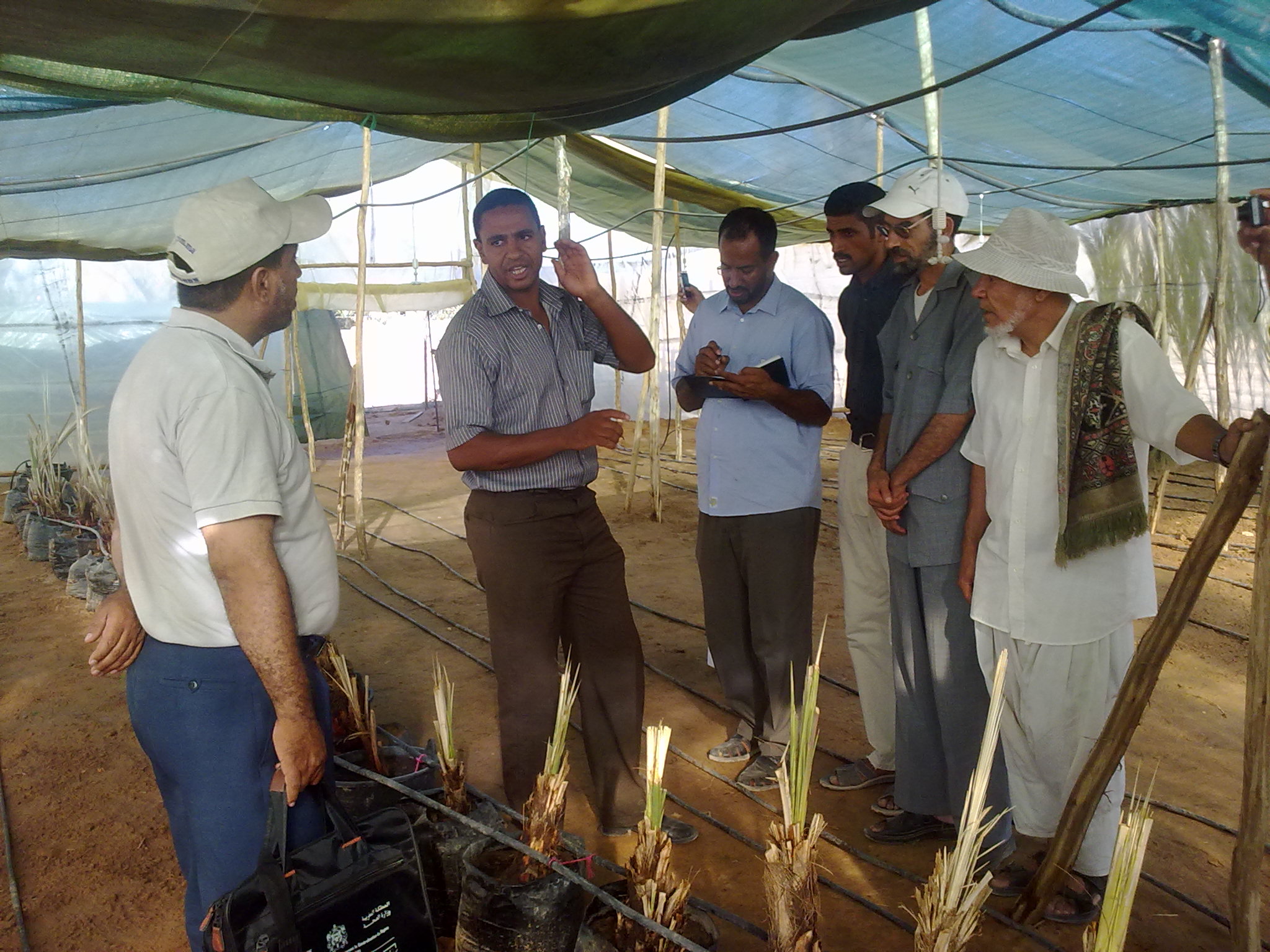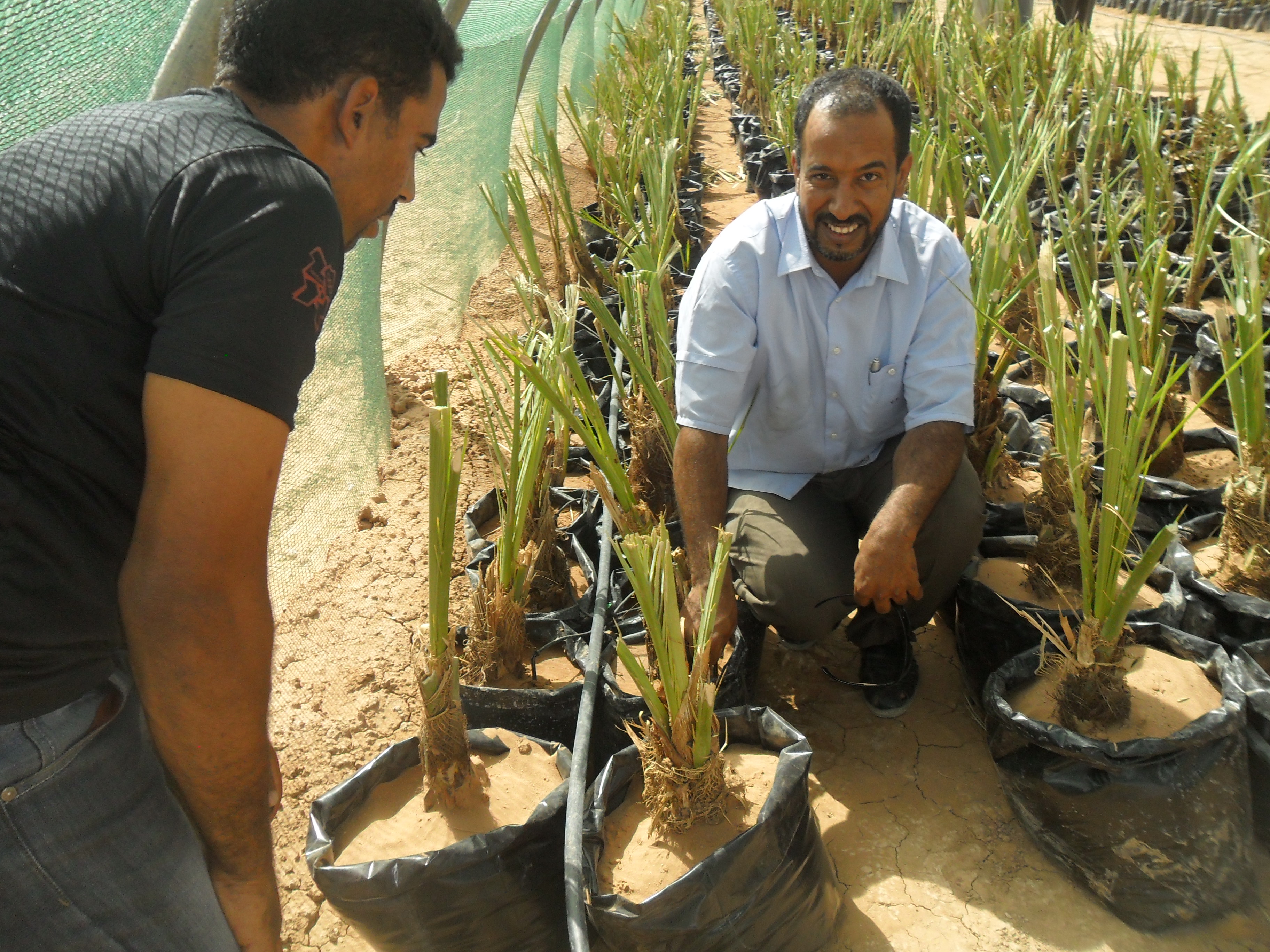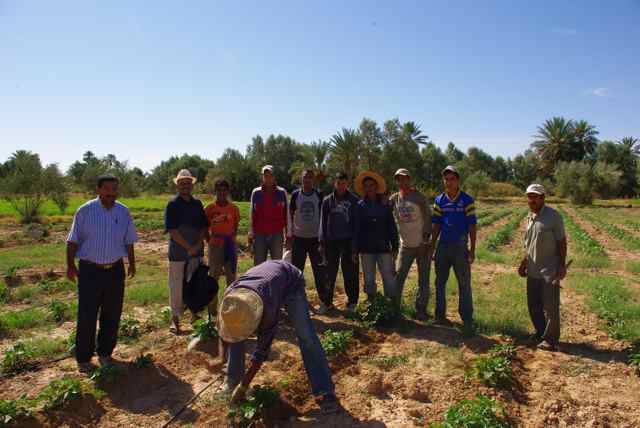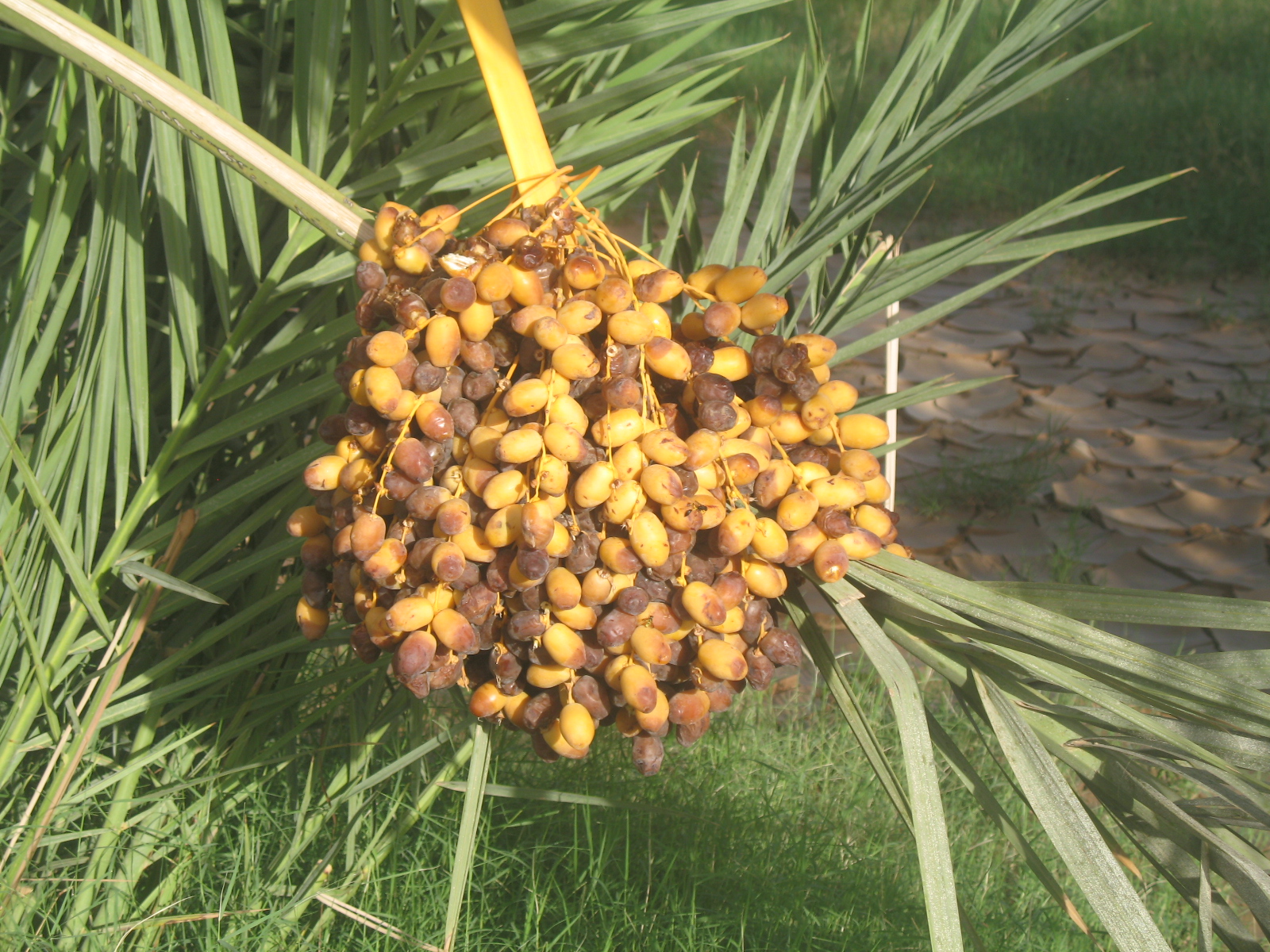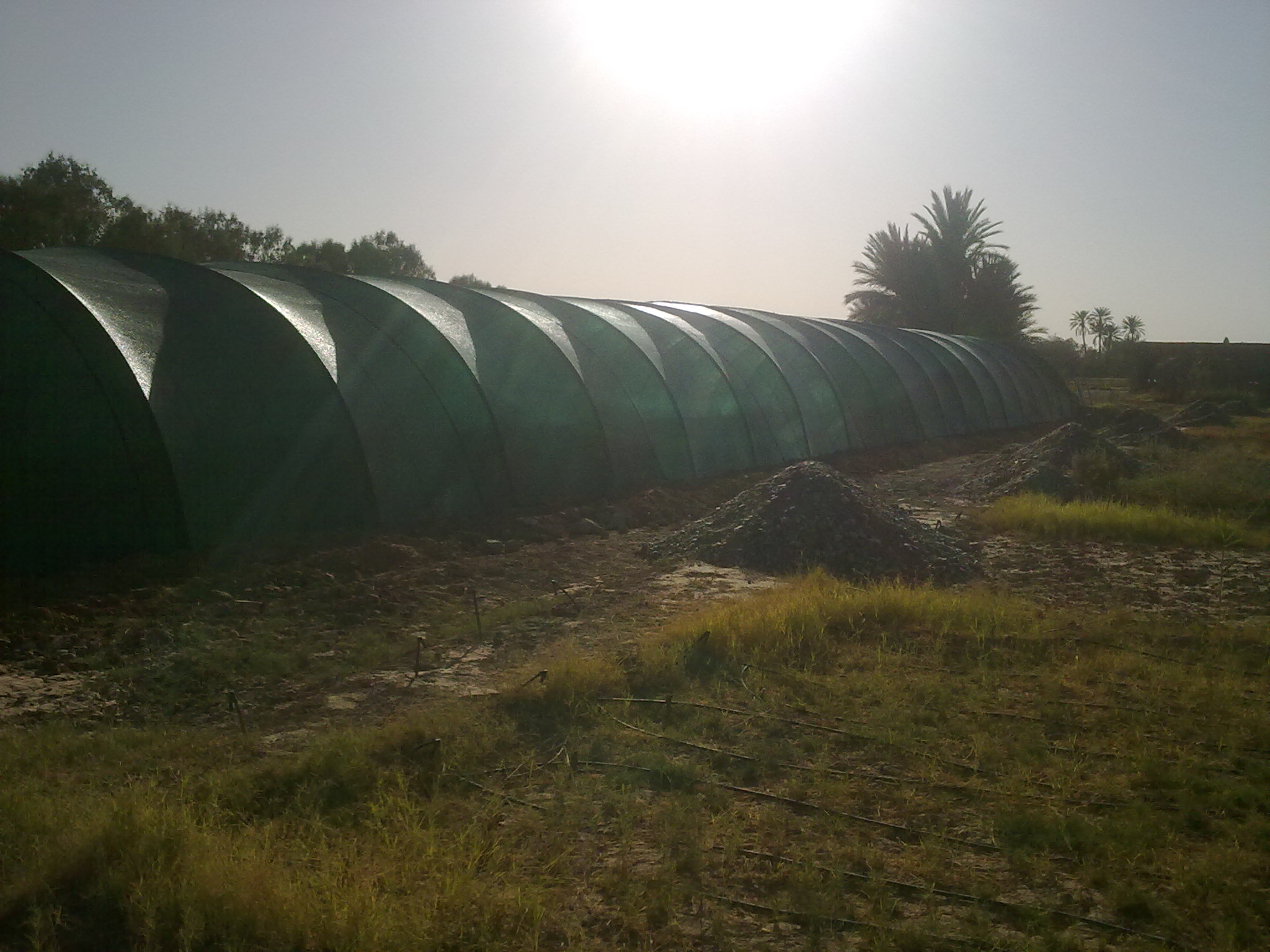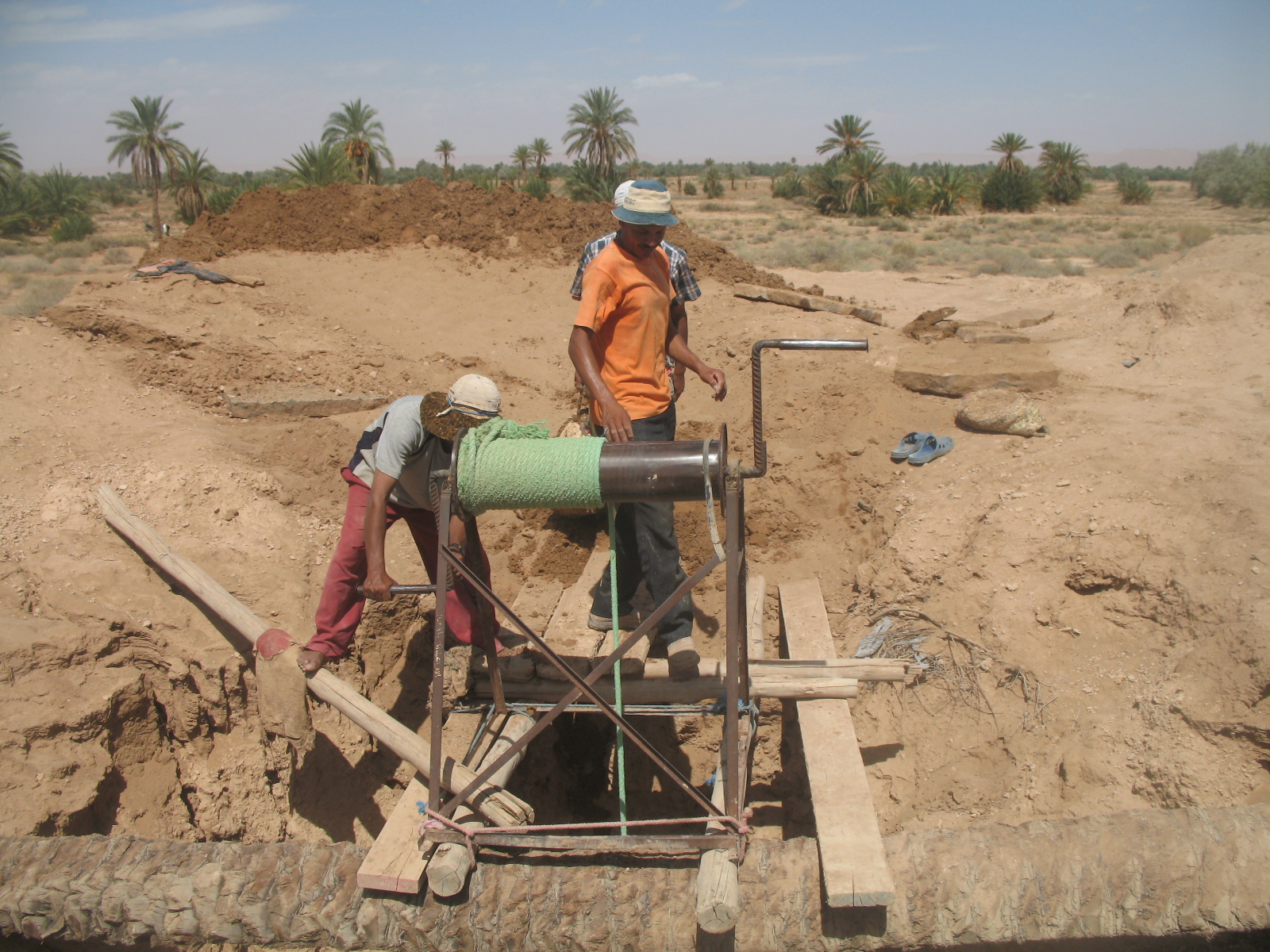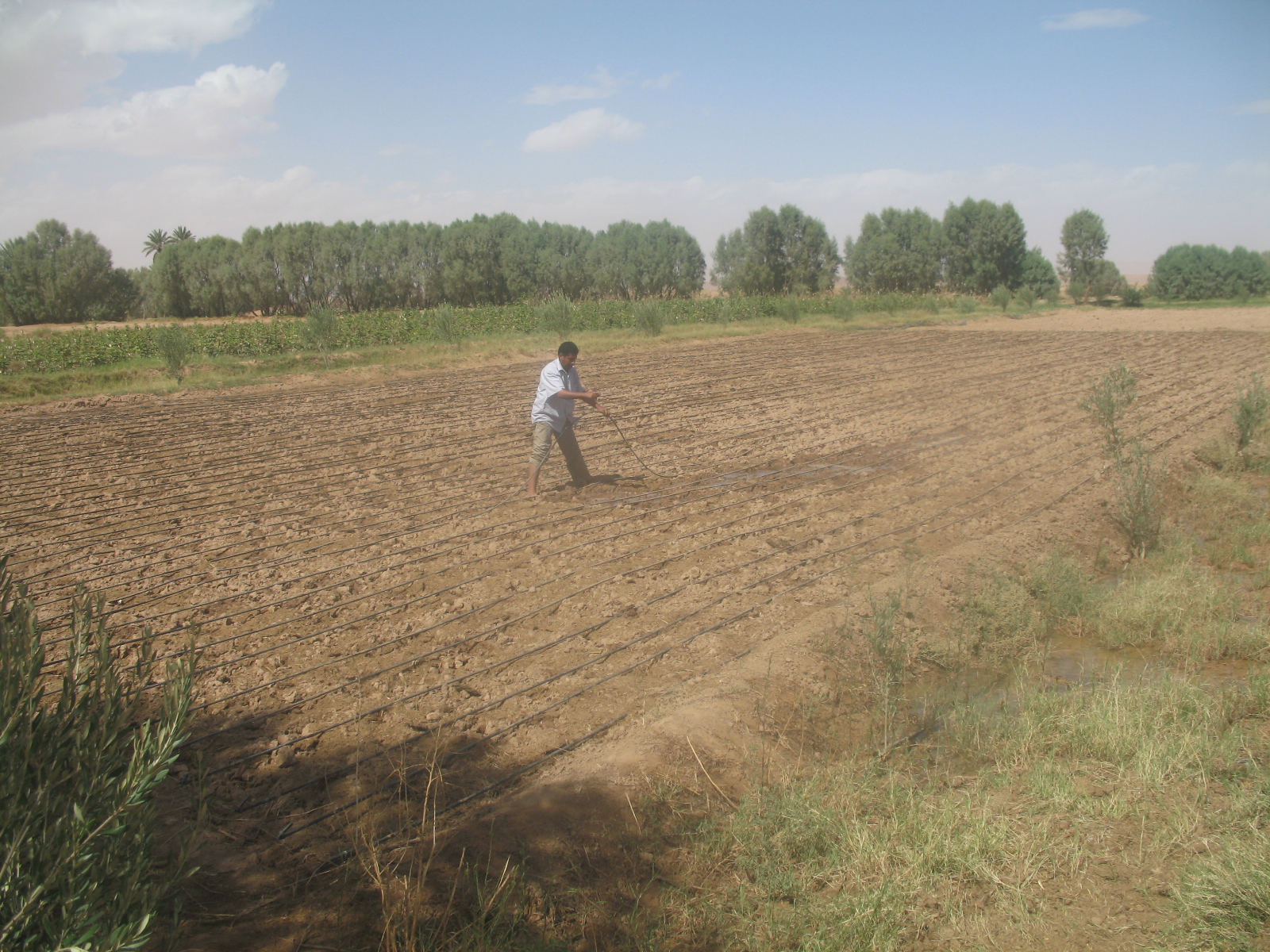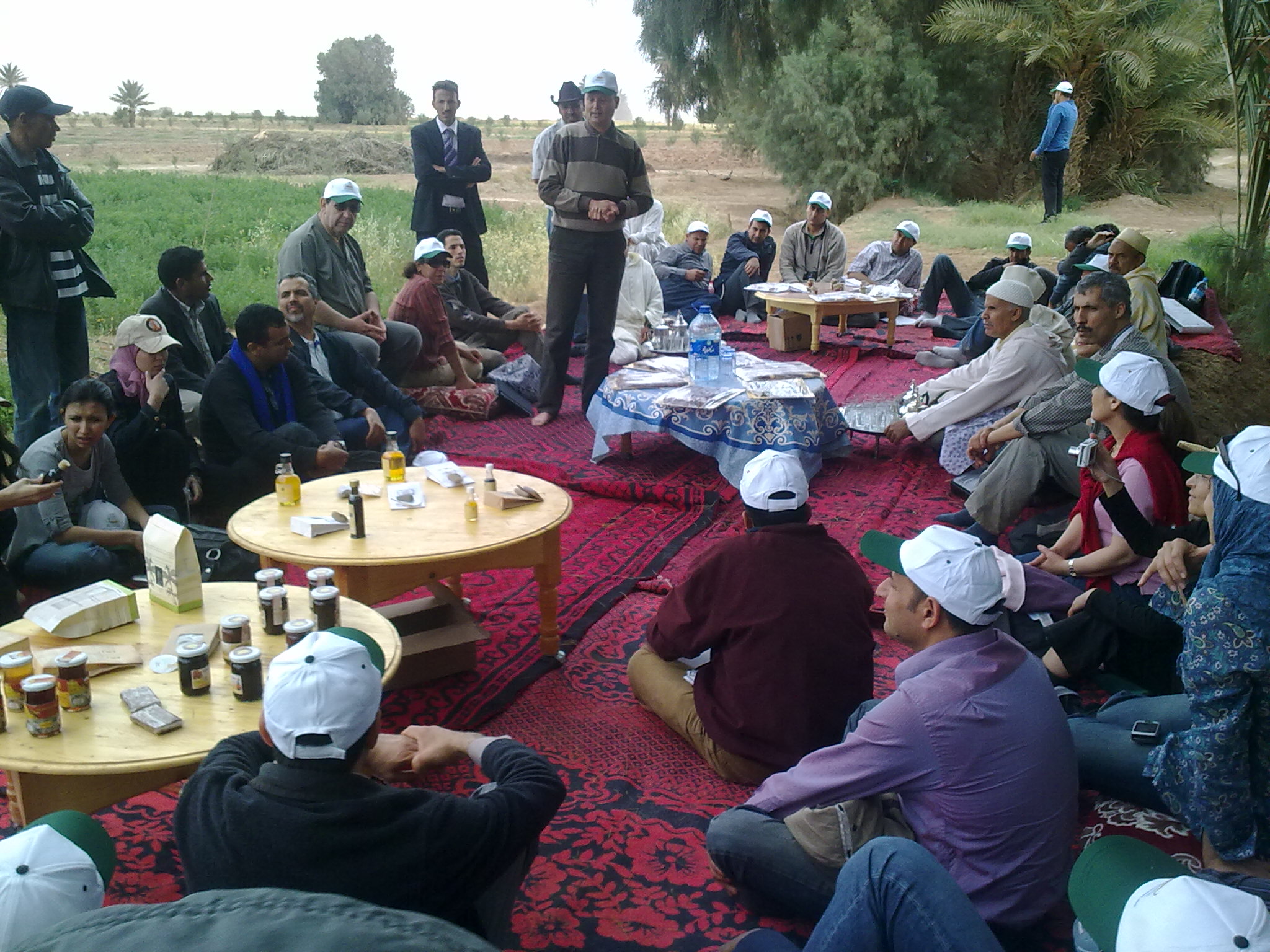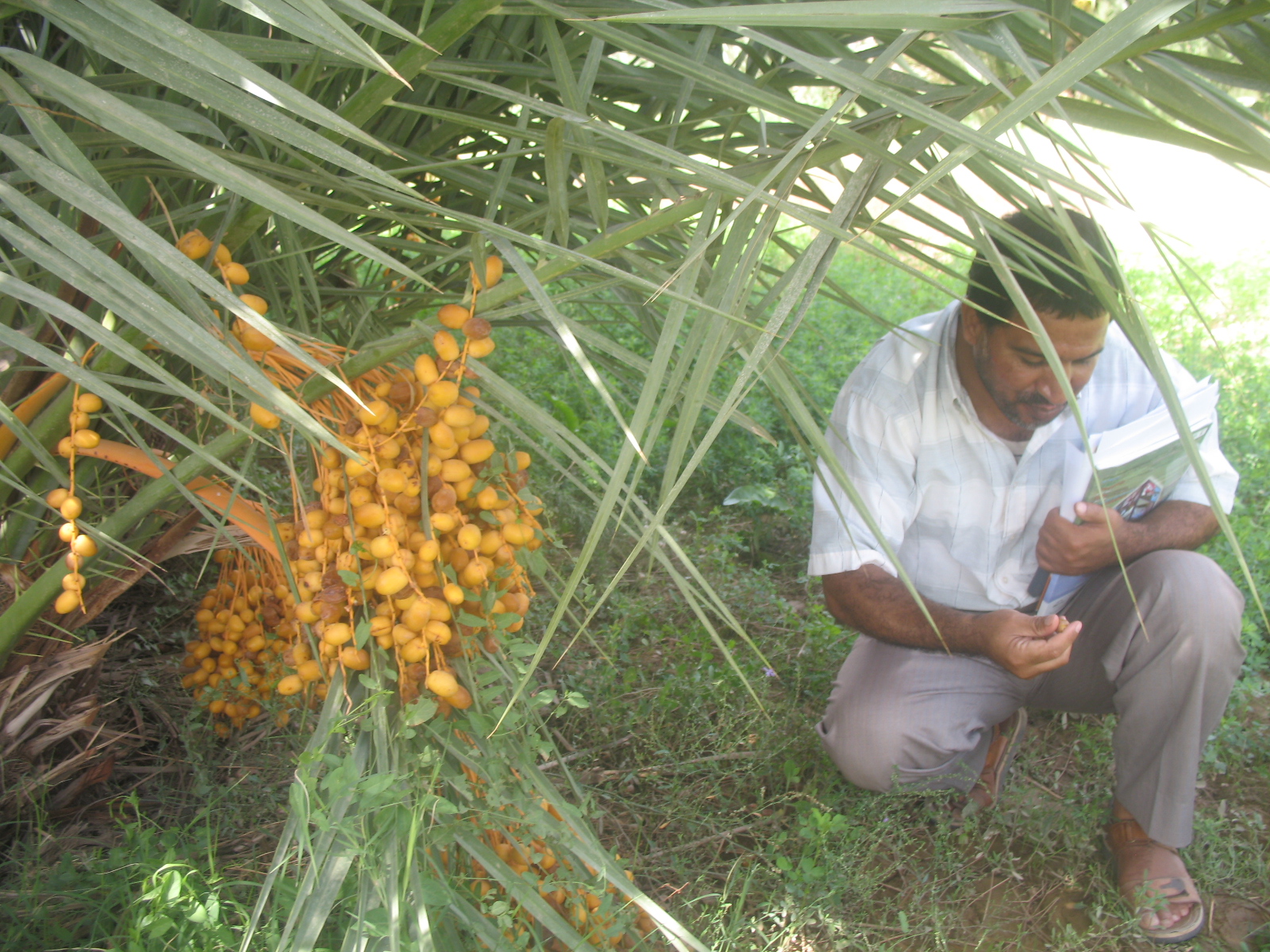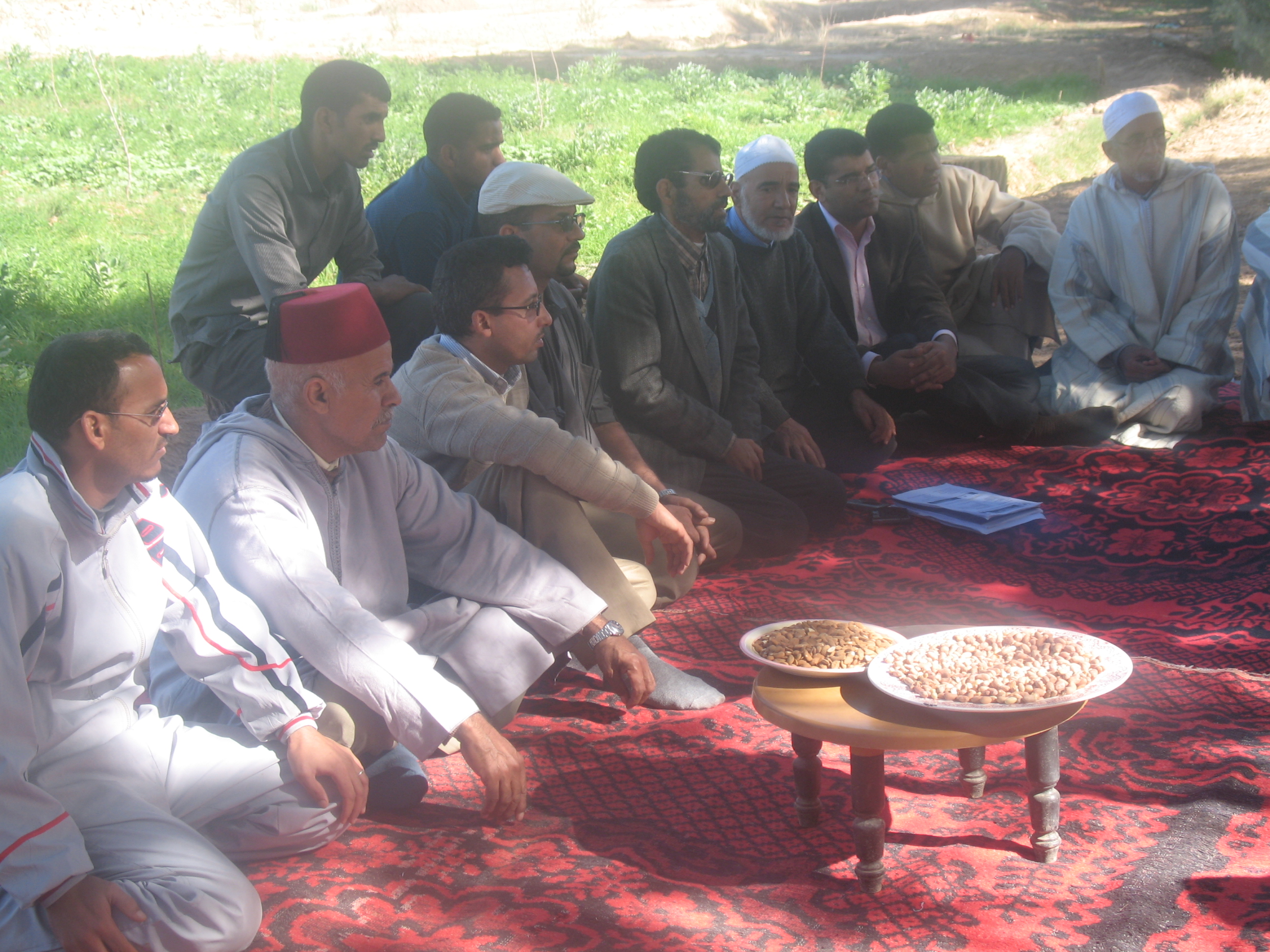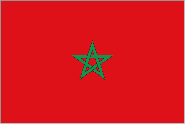CBA Morocco: Natural Resource and Endemic Species Conservation in Laachoria Community (Madania Farming Cooperative)
Project Overview
This Community-Based Adaptation project sought to strengthen the Laachoria community’s adaptive capacities in the face of intensified droughts and increased climatic variability while enhancing the resiliency of the local ecosystem.
This goal was achieved through the implementation of an adaptation strategy based on the protection, conservation and resilient management of local agro-biodiversity, focusing on a noble and resilient endemic species: the Medjool date palm.
The strategy was completed by the restoration of degraded lands and improved use of water through regenerating and water-saving crops.
* This project was part of Morocco's Community-Based Adaptation portfolio. *
Project Details
The fortified village (Ksar) of Laachoria is located in the Moroccan region of Tafilalet, south of Errachidia. The community of 2500 inhabitants relies, for their livelihood, on oasis farming and breeding, as well as on funds transferred from emigrated residents, and the salaries of numerous state employees in the village.
The local arid to semi-arid climate has experienced significant changes in the last few decades: increased temperature variability (including within one day), intensified droughts, and increased rain frequency and intensity. These occurrences are expected to grow in the future, increasingly affecting local resources. Soil erosion and degradation are expected to increase, along with the deterioration of local biodiversity and impacts on farming and local breeding. Worsening local conditions risk causing a growing exodus and abandonment of local activities, increasing the risk of desertification.
This Community-Based Adaptation project seeks to build the oasis ecosystem’s resiliency in the face of these climate changes through a strategy of soil and local agrobiodiversity conservation (palmgrove, aromatic and medicinal plants, and adapted fodder to enhance the resilience of local breeding), supported by community capacity building.
The Madania Cooperative, leader of this pilot project, was founded following a severe drought. Comprised of 50 members, it experiments and supports agricultural technical innovations while supporting the local heritage, in order to improve oasis living conditions and promote the village migrants’ “return to the land”. It is supported by the Tafilalet Oasis Programme, which aims at combating desertification and poverty (Land-Use Planning Management / Social Development Agency / UNDP Morocco).
Key Results and Outputs
Outcome 1.0: Strengthened oasis agro-system resiliency through drought-resistant Medjool date palm
Create a community nursery connected to the drip irrigation network to preserve Medjool date palms—a traditional pillar of oasis adaptation (Output 1.1). Sustainably regenerate 5 ha of deteriorated lands through the cultivation of Aromatic and Medicinal Plants, as well as resilient fodder varieties (Output 1.2).
Outcome 2.0: Improved community adaptation capacities through a training and support programme
Implement capacity building programme on lasting and protective use of the Medjool date palm, AMP and adapted fodder (Output 2.1), then train and empower women to conduct and manage these activities (Output 2.2).
Outcome 3.0: Lessons learned capitalized, promoted and disseminated
Monitor and document implementation (Output 3.1) and disseminate results to local and regional actors (Output 3.2).
Reports and Publications
PIFs
Monitoring and Evaluation
Monitoring of the Project
Progress reports to be presented every four months:
Production of a progress report regularly by the NGO: this report will present the project’s achievements. It will be produced by the NGO every four months. It will include a narrative report and financial report.
Monitoring of the community contribution:
For each of the project’s activities, a table will indicate the names of the community participants, volunteers, their contribution and the number of days they have contributed.
Visits of the site:
The CBA will organize at least two visits to monitor and evaluate the project. These visits will coincide with VRA workshops.
2. Project Evaluation
Internal Evaluation:
The association will conduct regular participative evaluations of the project (every 6 months). These evaluations will be conducted by the NGO and will involve the communities and local stakeholders involved. They will consist in the following:
- Assess the degree of achievement of the project’s activities (tool to be used: schedule of the project’s activities)
- Assess how results and impact indicators have been reached (tool to be used: project’s logical framework)
- Identify limitations and define measures to be undertaken to overcome them
- Gather the advice and recommendations of the local community/actors in order to readjust the project These evaluations will be conducted through enlarged meetings with the community and visits in the field. At the end of these evaluations, the NGO will produce a brief illustrated report.
Final External Evaluation:
This evaluation will be conducted in a participative manner by a consultant whom the NGO will hire (based on an invitation to bid).
It will rely on community evaluation reports and its goal will be to evaluate the following :
- The project’s achievements
- The measurement of indicators
- The degree to which the project’s goals have been achieved
- The project’s impact on the community (socioeconomic and environmental) based on the indicators defined below
- The project’s sustainability
- The crucial evaluation of community adaptation solutions and possibilities of replication / dissemination of the experience
The external evaluation will enable to draw the following:
- The project’s strengths and weaknesses
- Lessons learned and recommendations
